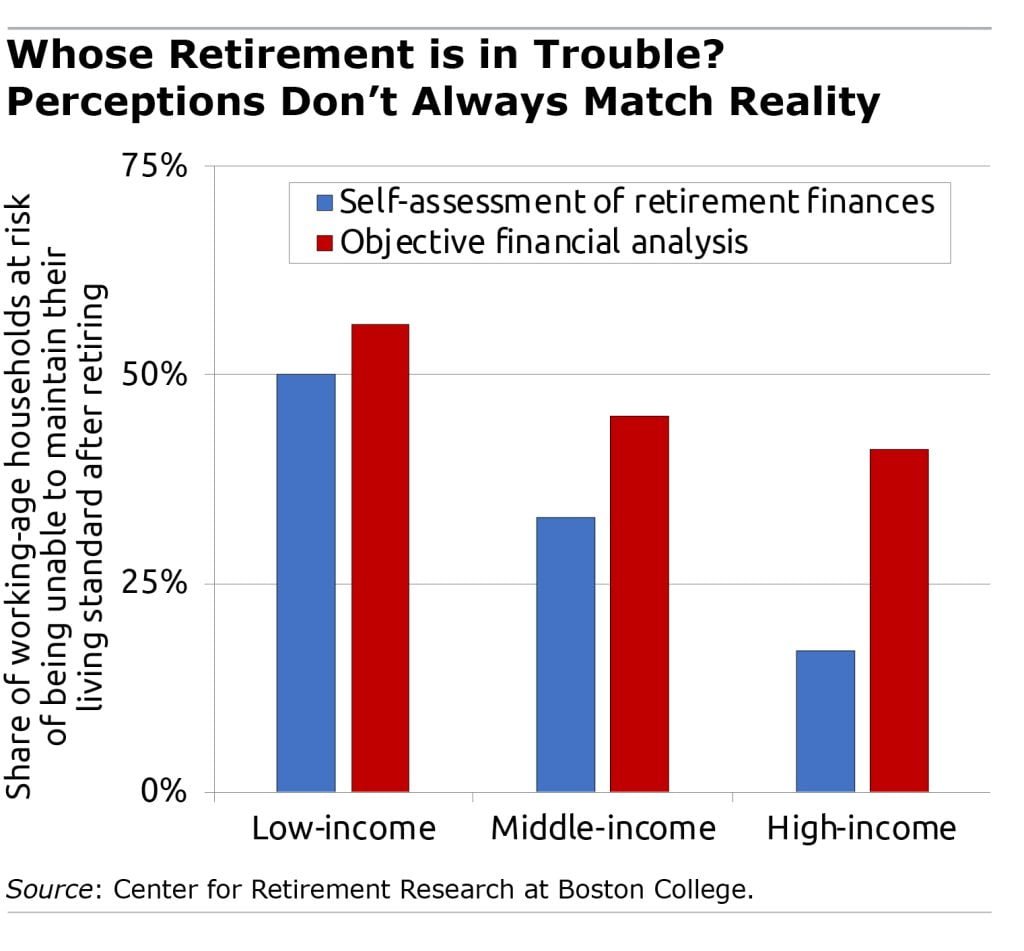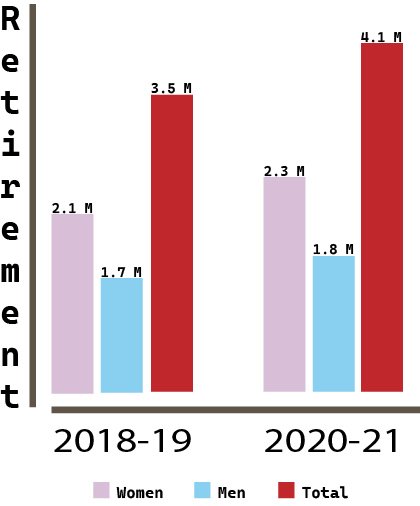Table of Contents
1. Introduction
In the vast realm of human storytelling, an enduring archetype stands tall—the hero. Through millennia of myths, legends, and tales, this pattern echoes, a timeless reverberation of the hero’s odyssey. The hero is summoned to adventure, compelled to act by destiny or circumstance. They set their objectives, confront obstacles, endure tribulations, make profound sacrifices, and ultimately emerge triumphant. These narratives exhilarate and motivate us, touching the very core of our human journey.
But what follows when the dust of triumph settles, and the hero returns?
This question often remains unexplored, veiled in silence. It’s as if we collectively avert our eyes from this crucial chapter, and it’s known as “retirement.”
Indeed, retirement—a term bearing a hefty, almost foreboding undertone. It’s a phase of existence many prefer to relegate to the shadows, far from the limelight of our heroic sagas. Yet, unbeknownst to most, the specter of this ultimate stage in life awaits each of us, irrespective of our earlier heroics.
Retirement isn’t merely about lounging on a beach or finally perusing the stack of tomes gathered over the years. It’s about uncovering fresh meaning, purpose, and gratification when the call to adventure shifts its timbre. The inner hero does not retire; it metamorphoses. This chapter invites us to rediscover ourselves, our passions, and perhaps embark on a distinct sort of expedition—one devoid of dragons or epic battles, yet equally enriching and transformative.

So why don’t we engage in more candid discourse about this? Perhaps because retirement signifies not an end, but a novel commencement—a chance to rewrite the script of our lives, to redefine success beyond the hero’s voyage. It’s a reminder that the hero’s journey is but one chapter in the narrative of our existence, with many more pages awaiting inscription.
In this uncharted expanse of retirement, we are all pioneers, forging distinctive trails and confronting our personal giants. It serves as a reminder that, regardless of our progress on this journey, the hero within us remains ever-present, prepared to embrace life’s forthcoming adventures. It’s time to reframe retirement not as a conclusion, but as a continuation of our life’s epic tale, where the hero never truly retires but continually evolves, adapts, and flourishes.
So, what lies beyond your heroic feats? It’s time to explore, uncover, and redefine your personal hero’s journey in the chapter known as retirement. Embrace it, for it is an adventure worth narrating—an adventure that, akin to all extraordinary stories, possesses the power to motivate generations yet to come.
In the captivating realm of literary scrutiny and the intricate machinations of the human psyche, the concept of the hero’s odyssey has forever enticed scholars and deep thinkers. It was during the 19th century that the pioneering anthropologist, Edward Burnett Taylor, unearthed the intricate blueprint that underlies innumerable narratives in global literature.
What Taylor revealed was nothing short of a revelation: a fundamental blueprint weaving its way through tales, uniting stories as diverse as the biblical saga of David and the contemporary epic of Star Wars.
Taylor’s revelation neatly partitioned this pattern into three distinct acts, each of paramount significance to the hero’s transformative chapter journey.
1.1. Act 1: The Call to Adventure
In the initial act, the protagonist-in-the-making is summoned to embark on an extraordinary chapter expedition. This moment often serves as a stirring rallying cry to action, intricately linked with a formidable task deeply rooted in religious or cultural significance. Ponder upon David’s unwavering valor as he confronted the colossal Goliath or the Rebel Alliance’s resolute call to confront the formidable Empire in the Star Wars narrative.
1.2. Act 2: The Arduous Trials
Following the call, the hero is subjected to a series of grueling trials, each appearing insurmountable. These trials relentlessly test the hero’s mettle, demanding they achieve what seems impossible. Envision the epic confrontation where David vanquishes the colossal Goliath or Luke Skywalker’s harrowing mission to annihilate the Death Star.
1.3. Act 3: Triumph and Metamorphosis
In the culminating chapter act, the hero emerges victorious, having conquered odds that once seemed insurmountable. They return as triumphant champions, having vanquished both inner and outer demons. Often, they return bearing newfound wisdom and insight to share with their world. The eminent psychoanalyst, Carl Jung, discerned the profound resonance of this myth within the human psyche.
He argued that successful individuals frequently interpret their life experiences through the lens of this narrative, for it mirrors the inner struggles and ultimate victories of the human psyche.
Jung famously asserted, “The one who has never faced the dragon is not a hero at all… Only the one who has confronted and conquered their inner dragons can truly claim self-assuredness.
Anthony Robbins, a luminary in the realm of personal development, echoed this sentiment, offering a pragmatic perspective on personal success. He affirmed, “Do you aspire to excel in your career? Then you must embark on your own unique hero’s odyssey: Define your objectives, muster the courage to attempt, endure the inevitable tribulations, make the essential sacrifices, and, with unyielding resolve, secure your triumph.”
In essence, the hero’s journey transcends the confines of age-old manuscripts and the glimmering silver screen—it serves as a blueprint for personal growth and transformation. It implores each of us to seek our own adventures, confront our unique challenges, and ultimately emerge as victors. As we navigate the labyrinthine pathways of our own lives, we, too, can rightfully claim the title of hero, for we shall have captured the most elusive treasure of all—self-assurance, forged in the crucible of self-discovery.
So, when the call to adventure beckons, embrace it with unwavering resolve, for your own heroic journey awaits. It is a voyage replete with trials, triumphant moments, and, above all, a profound recognition of the hero residing within each and every one of us.
In the culminating chapter act, the hero emerges victorious, having conquered odds that once seemed insurmountable. They return as triumphant champions, having vanquished both inner and outer demons. Often, they return bearing newfound wisdom and insight to share with their world. The eminent psychoanalyst, Carl Jung, discerned the profound resonance of this myth within the human psyche.
He argued that successful individuals frequently interpret their life experiences through the lens of this narrative, for it mirrors the inner struggles and ultimate victories of the human psyche.
Jung famously asserted, “The one who has never faced the dragon is not a hero at all… Only the one who has confronted and conquered their inner dragons can truly claim self-assuredness.
“The zenith of the hero’s odyssey is truly remarkable, but the descent into twilight harbors its own set of tribulations.” This assertion echoes the age-old notion that trials and tribulations do not dissipate upon entering the golden years; rather, they merely assume a different guise. In the grand tapestry of life’s hero’s journey, the middle act may be punctuated by achievements and triumphs, but the subsequent chapters usher in their own array of challenges, assessing one’s resilience and adaptability.
“The paramount rationale for those navigating the scenes of existence is the eventual absence of scenes and acts.” This statement underscores the sobering reality that life’s script does not endlessly unfurl. Retirement often signifies the culmination of a structured, purpose-driven chapter, thrusting individuals into the uncharted territory where the compass of purpose may falter.
“The concluding vital chapter of the narrative appears starkly vacant.” This sentiment alludes to the void that some retirees may grapple with, particularly if they have not sufficiently prepared for the emotional and psychological facets of retirement. The twilight years should ideally brim with significance and contentment, but they can easily descend into hollowness if not approached with intentionality.
Joseph Campbell’s concept of “crossing the threshold of return” assumes particular pertinence in this context. It acknowledges that, after basking in the glow of achievement, there arises the necessity for a transformative process upon reacquainting oneself with the humdrum of everyday life. This involves confronting the mundane and wrestling with the imperfections of reality.
The notion that the “authentic journey” of life entails grappling with inner demons during retirement constitutes a profound insight. It posits that the ultimate test lies not in external conquests but in internal growth and self-mastery. True triumph resides in vanquishing one’s own vulnerabilities and inclinations.
The cautionary tale of the CEO who clings tenaciously to power in the face of diminishing performance serves as a stark reminder that even accomplished individuals can succumb to the allure of authority and prestige. It underscores the significance of graceful farewells and the sagacity to discern when it is time to relinquish the reins.
In summation, these sentences and concepts paint a multifaceted portrait of retirement as a phase of life teeming with both liberation and challenge. They serve as a poignant reminder that the journey does not culminate with success but rather continues into retirement, where the battles may be inward but are no less momentous. Adequate preparation for retirement, encompassing not just financial readiness but emotional and psychological fortitude, is indispensable for navigating these uncharted waters with aplomb.
“A Tale of Resilience: The 80-Year-Old Politician’s Last Campaign”
In the twilight of a long and illustrious career, an 80-year-old politician embarked on a journey that would test not only his mettle but also his place in the annals of history. Though he narrowly missed victory in his last election campaign, his story became a powerful testament to the essence of the human spirit in the fourth act of life’s grand narrative.
The fourth act, often considered the crucible of personal testing, is the hardest and most critical curtain in the grand story of life. For this seasoned politician, it was a time of reckoning, a moment where the old glory had to be redefined and reimagined. Instead of futilely attempting to preserve the past, he recognized the need for a different approach.
Rather than banging on the door of bygone victories, he decided to chart a new course. He understood that the victories of the past would remain hollow if they were not accompanied by wisdom and grace in the twilight years. His journey was a call to embrace change, to adapt to the shifting landscape of life, and to redefine success in his own terms.
As he stood at the crossroads, the aged politician crafted a practical plan that would allow him to reveal his true strength and character in the final act of his life’s series. This plan wasn’t about electoral victories anymore; it was about nurturing relationships, showing kindness to family and friends, and being a beacon of inspiration for those who found themselves in the triple curtains of life’s narrative.
His legacy was no longer measured in votes but in the smiles of loved ones, the warmth of friendships, and the lessons he imparted to those still in the midst of their own journeys. In his final act, he chose to be a protagonist whose character arc inspired hope, resilience, and an unwavering commitment to living life with purpose.
The politician’s journey underscores a fundamental truth: planning and foresight in the earlier chapters of life lay the foundation for happiness in the retirement days. It serves as a reminder that our life’s narrative is not preordained; rather, it’s a story we craft through our choices and actions.
In the end, the 80-year-old politician’s chapter was not one of defeat but of triumph over adversity. His last campaign may have ended with a loss on the political stage, but it was a resounding victory in the theater of life. His story serves as a timeless reminder that, no matter our age, we have the power to shape our own narratives, and the choices we make in our final act can define our legacy for generations to come.
2. Here are some key parameters that contribute to the diverse feelings people have about retirement
2.1.Financial Preparedness:
Without a doubt, financial solvency stands as a pivotal determinant in the overall contentment experienced during one’s retirement years. This is a subject that garners considerable attention from experts and critics alike. To elucidate this assertion, let us delve into the life of Warren Buffett, widely acclaimed as the “Oracle of Omaha,” a venerable billionaire investor and the astute CEO at the helm of Berkshire Hathaway. His life’s journey and investment acumen offer an illustrative testament to the profound importance of astute financial planning for retirement.

Buffett, renowned for his remarkable investment prowess, has consistently underscored the pivotal nature of saving judiciously and making sagacious investment decisions throughout the course of one’s professional career. His sage advice resonates as a beacon of wisdom for those who aspire to secure a comfortable retirement.
From a statistical vantage point, an illuminating study conducted in the United States casts a spotlight on the pervasive issue of insufficient retirement savings. This study unearths a stark reality: a substantial 46% of households in their working-age years teeter perilously close to a precipice of financial insecurity in their retirement years.
This unsettling statistic serves as a poignant reminder of the daunting financial challenges that confront myriad individuals and families as they contemplate their golden years.
In the juxtaposition of Warren Buffett’s remarkable journey and the stark statistical reality, an incontrovertible truth emerges—an unwavering imperative for meticulous financial planning and prudent saving in anticipation of retirement Buffett’s own trajectory characterize by the accumulation of vast wealth through judicious investment decisions, stands as a compelling testament to the transformative power of astute financial planning.
Nevertheless, the disquieting statistics on retirement readiness sound a clarion call, imploring society at large to address this pressing issue through the prism of policy reform and enhanced financial literacy initiatives. The imperative is clear: the collective welfare of a significant portion of the populace hinges upon our capacity to navigate the intricate landscape of retirement preparedness with sagacity and foresight.
In conclusion, the correlation between financial stability and retirement contentment remains an incontrovertible verity. The tale of Warren Buffett, the “Oracle of Omaha,” and the sobering statistics unveiled by research illuminate the path to securing a prosperous retirement. It is a path paved with prudent financial planning, judicious saving, and informed investment choices—a path we must traverse collectively to ensure a brighter future for all.
2.2. Health and Wellness chapter

The influence of physical and mental well-being on the retirement journey stands as a topic of profound importance, transcending geographical boundaries and cultural distinctions. This phenomenon is vividly exemplified by the case of Japan, a nation currently grappling with the complexities arising from its rapidly aging population. This international juxtaposition underscores the pivotal role that health assumes in sculpting the quality of life during one’s retirement years.
In the Land of the Rising Sun, where life expectancy boasts some of the loftiest figures on the global stage, the concept of “healthy aging” has emerged as a focal point of societal attention. The demographic landscape of Japan, characterized by a substantial proportion of elderly citizens, has triggered the adoption of a comprehensive approach to promoting both physical and mental well-being in retirement. Let us delve into some salient considerations:
Longevity and Quality of Life: Japan consistently secures a top-tier position in global rankings of life expectancy. In the year 2021, the average life expectancy in Japan stood at a staggering 84.6 years, according to data from the World Bank. This prolonged existence bestows both opportunities and challenges upon its beneficiaries. While extended lifespans stand as a testament to remarkable advancements in healthcare and overall quality of life, they simultaneously necessitate a heightened focus on maintaining robust health throughout the extended tapestry of one’s retirement years.
Comprehensive Healthcare: Japan’s healthcare system stands as a pivotal chapter of accessibility and quality. The availability of healthcare services forms an indispensable chapter when confronting age-related health concerns, with the nation’s healthcare infrastructure assuming a pivotal role in bolstering the well-being of retirees.

Physical Activity: The Japanese retirement experience exalts the virtues of sustaining physical activity. Engaging in activities such as tai chi, yoga, and brisk walking has evolved into a cornerstone of the retirement lifestyle.
This commitment to physical engagement contributes significantly to improved physical health, enhanced flexibility, and an elevated sense of overall well-being Mental Health: Japan remains acutely attuned to the significance of mental health during one’s retirement years.
The aging process often ushers in an array of challenges, including isolation and depressive states. Consequently, concerted efforts are underway to furnish robust mental health support and to cultivate social connections among retirees.
Community centers and clubs are ubiquitous, offering valuable opportunities for seniors to engage with their peers.
Financial Security: While not intrinsically intertwined with health, financial security during retirement occupies a pivotal role in determining one’s overall well-being. In Japan, the government has instituted measures such as the Employee Pension System and National Health Insurance to ensure that retirees possess access to both financial resources and healthcare services.
Cultural Factors: Japan’s rich cultural tapestry underscores the reverence accorded to the elderly and the importance of intergenerational support. This cultural ethos imparts a profound sense of purpose and belonging within both the familial unit and society at large, contributing significantly to the preservation of mental health among retirees.
In summation, Japan stands as an illuminating global exemplar, illustrating the profound interplay between physical and mental health and the retirement experience. As aging populations burgeon worldwide, the lessons gleaned from Japan’s approach to healthy aging assume heightened relevance. The advocacy of well-being through accessible healthcare, the cultivation of physical activity, the fortification of mental health support systems, and the amplification of cultural values all prove imperative in ensuring that retirees bask not only in protracted lifespans but in lives that brim with fulfillment and activity.
The chapter between health and retirement constitutes a pivotal chapter demanding meticulous contemplation and strategic foresight for nations worldwide as they grapple with the multifaceted dynamics arising from an increasingly elderly populace
2.3. Cultural Expectations chapter
The subject of retirement expectations and its cultural impact is undeniably a captivating one. It wields significant influence over people’s contentment and decisions in their post-professional years. Let us embark on a journalistic exploration of this theme, peering into the experiences of eminent personalities and drawing from pertinent statistical data.
In the United States, a profound cultural emphasis has traditionally centered on the concept of early retirement and the pursuit of leisure. This notion has been firmly entrenched in the American psyche through the lens of the “American Dream.” Here, the idealized life trajectory often involves dedicating one’s prime years to toiling diligently, with the reward being a protracted period of relaxation and enjoyment during retirement.
This sentiment finds resonance in the life paths of luminaries such as Warren Buffett, the legendary investor, and Bill Gates, the co-founder of Microsoft. Both have amassed immense fortunes yet persist in their endeavors well beyond the conventional retirement age. Their actions mirror the American cultural ideal of postponing retirement to pursue personal passions and contribute to society.
In contrast, countries like Germany have a cultural tradition that leans towards retiring later in life. This practice finds its roots in the concept of “Ruhestand,” which can be translated as the “resting state.” It implies that one should continue working until a more advanced age to ensure financial stability in retirement. Prominent Germans, including Chancellor Angela Merkel, who remained in office until her late 60s, serve as exemplars of this cultural norm, prolonging their careers well into their senior years.
Nonetheless, as you have astutely observed, these cultural expectations can also yield adverse consequences. When individuals feel compelled to conform to societal norms that do not align with their personal aspirations or circumstances, it can engender discontentment during retirement. This disquiet is not limited to any particular culture or region but resonates on a global scale.
From a statistical perspective, surveys and research consistently illustrate the profound impact of these cultural expectations on retirement contentment. The Global Retirement Index, for instance, underscores how retirement satisfaction varies significantly between countries, with cultural norms exerting substantial influence. In the United States, where early retirement is culturally extolled, those who embrace this idea may indeed experience higher levels of retirement satisfaction. Conversely, in countries like Germany, where delayed retirement is the norm, those who retire prematurely may grapple with feelings of dissatisfaction.
In summation, it is incontrovertible that cultural expectations surrounding retirement exert a considerable sway over individuals’ choices and their subsequent satisfaction in their twilight years. The lives of illustrious figures such as Warren Buffett, Bill Gates, and Angela Merkel serve as vivid illustrations of how these cultural norms can mold retirement decisions.
Nevertheless, it is imperative to acknowledge that a one-size-fits-all approach is untenable.
Individuals should be afforded the autonomy to make retirement choices that harmonize with their personal aspirations and financial circumstances, free from the weight of societal pressures. Striking a balance between cultural ideals and individual needs is paramount to ensuring a gratifying and contented retirement for all.
2.4. Social and Family Support chapter
The influence of social support and familial bonds on the retirement experience stands as an undeniable truth. It’s a phenomenon intricately woven into the fabric of culture and society, resulting in diverse retirement narratives across the globe. To truly grasp this, we shall delve into the divergent realms of multi-generational living arrangements in Japan and the United States, all while consulting experts who illuminate the vital role of social connections in the twilight years.
In the Land of the Rising Sun, Japan, renowned for its unwavering commitment to family values and intergenerational ties, multi-generational living is a common thread in the social fabric. This practice, often referred to as “ie” or household living, entails several generations sharing a single roof. Grandparents, parents, and children coexist, fostering a web of familial bonds and mutual support. This distinctive family structure profoundly shapes the Japanese retirement landscape.
As elder family members retire, they continue to actively participate in household affairs, including childcare and domestic responsibilities.
This symbiotic arrangement creates a robust social safety net, eradicating the pervasive sense of isolation and melancholy often linked to retirement.
On the flip side, in the United States, a nation celebrated for its individualistic ethos and a prevalence of independent living arrangements, retirement experiences can be markedly different. While many American retirees opt for independent living or retirement communities, the absence of multi-generational households can sometimes lead to feelings of solitude. Loneliness and despondency can creep in, as retirees miss out on the daily social interactions and support systems prevalent in multi-generational setups.
Experts in the field emphatically underline the significance of nurturing social connections during retirement. Loneliness and social isolation are known to trigger adverse health consequences, including an elevated risk of mental health disorders and physical ailments. Experts advocate for retirees to actively engage in social pursuits, be it joining clubs or organizations, volunteering, or participating in community events, as a countermeasure against these detrimental effects. Staying in touch with friends, family, and peers holds the potential to significantly enhance overall well-being during retirement.
Statistics further underscore the paramount importance of social connections in the golden years. A report from the National Institute on Aging reveals that seniors with robust social ties not only experience greater happiness but also enjoy extended lifespans. Research conducted by the American Psychological Association concurs, demonstrating that individuals with flourishing social networks are less susceptible to depression, anxiety, and cognitive decline in their later years.
In summation, the retirement journey is profoundly shaped by the degree of social support and familial connections, a dynamic that fluctuates markedly across the global landscape. Japan’s multi-generational living arrangements exemplify the affirmative influence of sturdy family bonds on retirement, while the more solitary approach in the United States highlights the potential pitfalls of social isolation.
Experts speak in unison, emphasizing the imperative nature of maintaining social ties during retirement.
Their wisdom is bolstered by statistical evidence illustrating the tangible physical and mental health benefits stemming from these connections. Hence, the cultivation of social bonds remains an essential cornerstone in ensuring a gratifying and healthful retirement experience, transcending borders and cultures.
2.5. Work Satisfaction chapter
The intricate tapestry of emotions entwined with retirement, coupled with the imperative quest for post-retirement gratification, resonate profoundly with a multitude of individuals. Eminent luminaries hailing from diverse vocations have grappled with this transitory phase, imparting sagacious insights into the multifaceted essence of retirement.
One such illustrious figure is the former President of the United States, Barack Obama.
After a storied tenure at the helm of the nation, Obama embodies the notion that individuals who have basked in the radiance of fulfilling careers can find themselves ensnared in a labyrinth of emotions upon retirement’s threshold.
Having occupied one of the most formidable positions on the global stage, Barack Obama has transitioned into a phase replete with manifold pursuits. This includes the authorship of compelling memoirs that illuminate his journey, as well as the establishment of the Obama Foundation, an entity dedicated to catalyzing positive change. These endeavors are emblematic of a yearning to sustain a semblance of purpose and self-identity after the curtains fall on a prominent career.
Conversely, those who have traversed the tumultuous terrains of disheartening work experiences may eagerly embrace retirement as a liberating respite from arduous or unsatisfactory professional environs. The life and exploits of Elon Musk, the visionary luminary responsible for pioneering ventures such as SpaceX and Tesla, serve as a noteworthy testament to this phenomenon.
While Musk remains ardently ensconced in the stewardship of his corporate empires, his unwavering pursuit of audacious aspirations has often entailed Herculean toil and prodigious stress.
For individuals of Musk’s ilk, the prospect of retirement may not hold the same allure, for their hearts pulsate with an inexhaustible fervor for innovation and the relentless molding of the future. https://www.youtube.com/watch?v=gAE4bFKpUlA
The annals of critique have long underscored the paramount importance of unearthing post-retirement activities that imbue life with meaning and significance. In this context, we pivot our gaze toward the illustrious Queen Elizabeth II of the United Kingdom.
Despite the sands of time sweeping over her, and an illustrious history of royal duties, the Queen remains resolutely committed to ceremonial obligations and benevolent endeavors.
Her steadfast dedication to the cause of service serves as a luminous exemplar, illuminating the notion that retirement need not be synonymous with purposelessness; rather, it can be an opportune juncture to redirect one’s energies toward pursuits that not only satiate the soul but also confer a lasting, positive imprint upon society.
In summation, the emotional landscape encircling retirement is as diverse as the individuals who navigate its labyrinthine contours. While some, akin to Barack Obama, grapple with the melancholic parting from a career imbued with identity, others, like the indomitable Elon Musk, continue to embark upon audacious odysseys in their twilight years. The clarion call resounds, emphasizing the pivotal import of discovering post-retirement endeavors that bestow upon life a sense of purpose and contentment, a principle exemplified by Queen Elizabeth II’s unwavering commitment to the service of her realm.
Ultimately, the chapter of retirement is a deeply personal odyssey, charted by the trajectory of one’s career, the loftiness of one’s aspirations, and the enduring desires that transcend the realm of the working years.
2.6. Government Policies and Retirement Age chapter
Government policies and the official retirement age are subjects of considerable diversity on the global stage, casting profound implications on the retirement experiences of individuals around the world. This panoramic view of retirement policies often engenders spirited debates, with critics scrutinizing the efficacy of pension systems and the equity of retirement age regulations. France, in particular, stands as a notable crucible for ongoing dialogues surrounding retirement policies.
In recent times, the French government has grappled with the imperative of elevating the retirement age, principally in response to fiscal conundrums precipitated by an aging populace and escalating pension outlays. This decision, however, has not been bereft of contention, giving rise to fervent protests and extensive deliberations pertaining to retirement contentment and economic equilibrium.

From a statistical vantage point, the retirement tableau in France proffers valuable insights into these debates. As of my last knowledge update in September 2021, the sanctioned retirement age in France was affixed at 62 years. Nevertheless, propositions have been mooted to incrementally raise this threshold, with the overarching aim of fortifying the long-term viability of the pension system. These deliberations accentuate the intricate equilibrium that policy architects must meticulously construct, harmonizing the financial robustness of retirement programs with the welfare and gratification of their maturing populace.
Detractors posit that the elevation of the retirement age may exert a disproportionate impact on specific demographic segments, chiefly those laboring in physically arduous vocations or grappling with health vicissitudes. Such measures, they contend, hold the potential to truncate the quality of life during one’s twilight years. Conversely, advocates assert that such stratagems are indispensable for buttressing the fiscal well-being of pension systems and securing the prospect that forthcoming generations may also avail themselves of these provisions.
In summation, the global discourse surrounding retirement policies, epitomized by France’s ongoing dialectics concerning the elevation of the retirement age, underscores the intricate quandaries that governments confront in reconciling fiscal prudence with the welfare and satisfaction of their burgeoning elderly populace. These conversations are poised to perpetually metamorphose as nations wrestle with the demographic sea changes and economic exigencies concomitant to a graying society. For the most current insights on this topic, it is judicious to peruse contemporary news outlets and official governmental pronouncements.
2.7. Economic Conditions
The chapter of economic conditions and retirement choices stands as a matter of profound significance, wielding a substantial impact on the blueprints and perceptions that individuals hold for their twilight years. The annals of history bear witness to the global financial debacle of 2008, a vivid exemplification of how the ebb and flow of economic tides can exert an indelible sway over the tapestry of retirement decisions.
Statistical Illumination: Amid the maelstrom of the 2008 financial crisis, there emerged a discernible surge in the ranks of seasoned adults electing to elongate their professional sojourns and defer the twilight of retirement. This phenomenon found its impetus in the interplay of various factors, each contributing to the collective rethink:
Eviscerated Retirement Reserves: The seismic tremors of the economic downturn wrought grievous losses upon the sanctum of retirement coffers, decimating the valor of portfolios, including the venerable 401(k)s and IRAs. Those in the twilight of their careers, having watched their nest eggs wither, were compelled to embark on a reevaluation of their retirement timelines.
The Abyss of the Housing Market: A multitude of retirees had tethered substantial segments of their affluence to the realm of real estate. The cataclysmic implosion of the housing market not only depreciated the intrinsic value of their abodes but also shackled their capacity to downsize and harness the accrued equity to kindle the flames of retirement prosperity.
Austerity in the Employment Sphere: As the crisis unfurled its dark mantle, it unfurled a parallel spectacle of rampant job evanescence. Aged individuals suddenly thrust into the unforgiving embrace of unemployment found themselves caught between the Scylla of a contracting job milieu and the Charybdis of compromised capacity to amass resources for retirement.
The chapter of inadequate pensions casts a pall over a sizeable cohort of retirees who lean upon the buttress of pension schemes for sustenance. The financial tempest rocked the very foundations of some of these pension bastions, instilling misgivings about the continued viability of these conduits of financial well-being.
The aftermath of these tribulations reverberated with crystal clarity. The chronicles of that era stood as testament to a surge in the labor force participation rate among senior denizens of the United States. Many who had erstwhile envisioned their golden years taking flight found themselves recalibrating their compasses, often tacking on several additional years to their professional odysseys. Their pursuits centered on the twin objectives of rebuilding their enfeebled coffers, unburdening themselves of financial albatrosses, and weaving the fabric of a more idyllic retirement.
This paradigm shift in the retirement mosaic during the crucible of the financial crisis underscores the intricate web of causality connecting economic vicissitudes to retirement determinations. It also imparts a salutary lesson: the economic climate has the potency to transmute the halcyon ideals of retirement into an extended chapter of labor when the specter of fiscal instability looms large. Retirement, once envisaged as an epoch of leisure and reprieve, can mutate into an extended span of toil when the crucible of economic ambiguity comes to the fore.

To draw the curtain, the annals of the global financial crisis of 2008 offer a stark tableau of how economic convulsions can summon forth the imperatives of reappraisal among older cohorts. The empirical tableau from that juncture attests to the resilience and adaptability of individuals grappling with the throes of economic turbulence. They were compelled to make the arduous decisions necessary to secure their financial solace in a tempestuous financial seascape.
In conclusion, the realm of retirement is a mosaic of intricate factors, each contributing to the tapestry of one’s retirement experience. Financial stability, health, culture, society, and economics are the threads that weave together the diverse perspectives on retirement, painting a picture that is as unique as the individuals who embark on this life-changing journey. Understanding the multifaceted nature of retirement is essential in appreciating the rich tapestry of retirement experiences that span the globe.
For whom is retirement boring and for whom is it comfortable?
Retirement experiences are an intricate tapestry, woven from the threads of individual preferences, financial acumen, and cultural nuance. The perception of retirement, whether it unfolds as a mundane affair or a comfortable sojourn, hinges on these multifaceted factors. Let us embark on a journey through the realms of retirement, guided by the wisdom of critics, the insights of experts, the guidance of pertinent statistics, and the kaleidoscope of international experiences.
Financial Preparedness, the bedrock of retirement serenity, entails meticulous savings and judicious investments. An artful dance with numbers can bestow the financial cushion required to savor leisurely pursuits, globetrotting escapades, and indulgence in lifelong passions. Critics and pundits, in their resounding chorus, extol the virtues of financial literacy and the necessity of early retirement planning.
The National Institute on Retirement Security (NIRS) in the United States unfurls a disconcerting canvas. Their report, a stark revelation, unveils that approximately 45% of all households—comprising a staggering 40 million working-age households—languish devoid of retirement savings. In this landscape of uncertainty, the road to retirement may seem treacherous for the many who tread it without financial preparedness as their trusted guide.

Health and Lifestyle, the twin pillars of retirement’s temple of contentment, command the spotlight. The keepers of wisdom often admonish that vitality, both physical and mental, unfurls the tapestry of a gratifying retirement. Engaging in endeavors such as philanthropy, the pursuit of one’s passions, and the embrace of cherished relations imbues retirement with profound fulfillment.
Within the hallowed pages of the journal “Age and Ageing,” a study stands as a sentinel of truth. It affirms that retirees who partake in a regimen of regular physical activity bask in the radiant glow of elevated life satisfaction and unabated happiness. This revelation is a testament to the profound impact of lifestyle choices on the retirement tableau.
Social Connections, the ethereal threads that bind human hearts, weave a mosaic of significance in the retirement narrative. Esteemed experts herald the imperative of maintaining social ties as a potent shield against the specter of isolation and ennui in retirement’s embrace.
Down under, the Australian Institute of Family Studies has unfurled its findings, illuminating the path. In their survey, the resonance of social connections reverberates, casting its brilliance upon the tapestry of retirement satisfaction among elder Australians. The company of kindred spirits elevates the retirement experience from mundane to sublime.
Cultural Context, a chameleon of influence, paints unique strokes on the canvas of retirement experiences. In certain realms, retirement is the symphony of relaxation and leisure, while in others, it orchestrates continued labor and caregiving duties. The prism of culture refracts perceptions and sculpts the contours of retirement.
For instance, in the Scandinavian chapter bastions of Denmark and Sweden, the chapter ethos reverberates with a symphony of work-life equilibrium and social safety nets. Within this embrace, their citizens bask in the golden rays of comfortable retirement, serenaded by the harmony of collective well-being.
In summation, retirement’s tapestry is woven with the threads of financial preparedness, the fabric of health and lifestyle choices, the intricate patterns of social connections, and the vibrant hues of cultural context. Critics and sages counsel the wisdom of early planning, the vitality of physical and mental well-being, the significance of social engagement, and the acknowledgment of cultural expectations. Ultimately, the perception of retirement is an idiosyncratic melody, harmonizing the interplay of these factors, composed uniquely in the heart of each individual.
Why should it be terrible for someone who has worked hard and bitterly for many years and has a good performance like a hero who killed a giant or blew up a star?
The enigma of why an individual who has diligently toiled and attained an elevated pinnacle of performance may find themselves ensnared in a mire of desolation is a multifaceted conundrum. It beckons us to delve into its depths, contemplating the perspectives of scholars, critics, and the experiences of disparate societies across the globe.
The Abyss of Burnout and Exhaustion: One plausible rationale for this disconcerting phenomenon is the scourge of burnout and exhaustion. Psychologists, well-versed in the labyrinthine workings of the human psyche, frequently underscore the pernicious consequences of relentless labor devoid of reprieve.
The pursuit of excellence, akin to the feats of mythical heroes who vanquished giants or obliterated celestial orbs, can exact an exorbitant toll in terms of effort and sacrifice.
Gradually, this Herculean exertion can result in both physical and mental fatigue, leaving a haunting void or a pervasive sense of discontentment despite monumental accomplishments.
External Pressure and the Weight of Expectations: Critics, on the other hand, vociferously assert that external pressures and the burdensome expectations thrust upon the most distinguished of individuals can corrode even the stoutest of spirits. When someone attains the status of a hero or a luminary, the ceaseless onus to sustain that illustrious image or continually scale the peaks of achievement can become an overwhelming albatross. Detractors posit that the specter of failure or the fear of falling short of expectations can be harbingers of self-doubt and despondency.
The Chasm of Unfulfilled Aspirations: It is imperative to acknowledge that professional triumph may not invariably translate into personal contentment. Connoisseurs of positive psychology proffer the notion that genuine felicity often emanates from a profound sense of purpose, meaningful human connections, and personal evolution. Should an individual forsake these facets of existence in their single-minded pursuit of professional glory, they might find themselves adrift, estranged from their own values and desires, with a palpable sense of emptiness.
The Solitary Expanse of Social Isolation: On occasion, individuals who have scaled the heights of success may find themselves ensconced in the solitary fortress of social isolation. Their achievements can bestow upon them an overwhelming sense of otherness, making it a Herculean task to connect with those who have not partaken in their unique odyssey. This isolation can be an insidious harbinger of solitude and melancholy.
The Precarious Precipice of Comparison: Savants oft emphasize the perils of juxtaposing oneself with others, particularly in an era inundated with the curated personas of social media. Even individuals who have attained prodigious success may grapple with profound anguish when they perceive others as more accomplished or blissful. Detractors contend that the ceaseless juxtaposition with peers or even fictional paragons can inexorably erode one’s self-esteem.
Cultural and Societal Determinants: The tapestry of experiences is woven differently in diverse cultural and societal milieus. In certain cultures, the veneration of individual achievement is particularly accentuated, thereby engendering a heightened susceptibility to burnout and discontentment. Conversely, societies that prioritize the equilibrium between work and life, as well as communal well-being, may yield individuals who, despite their laurels, are less ensnared by the clutches of desolation.
It is imperative to recognize that these factors manifest themselves uniquely in each individual, and there is no panacea to this intricate quandary. Indeed, some individuals may bask in the warm glow of fulfillment and pride in their accomplishments, while others navigate the labyrinthine corridors of complex emotions.
Understanding these nuances and seeking solace in the counsel of mental health experts or kindred spirits may prove indispensable for those grappling with these profound sentiments.
Furthermore, the perception of success and its ramifications for one’s well-being are as varied as the hues of a rainbow, influenced by the unique tapestry of personal experiences and cultural perspectives.
How can people’s spirits be balanced at the end of a successful path and align them with the realities of life in order to avoid harming themselves and others?
Harmonizing one’s emotional state upon reaching the pinnacle of achievement, aligning it with the stark truths of existence, is an intricate and multifarious endeavor that taps into a diverse array of influences. These encompass the wisdom of authorities, the discernment of critics, and the wisdom gained from traversing diverse lands and cultures. Here, we elucidate a repertoire of stratagems and revelations to guide individuals on their quest for this elusive equilibrium.
Cognitive Well-being Guidance: Esteemed authorities underline the paramount significance of seeking cognitive well-being support, such as psychotherapy or psychological counseling, to grapple with the tumultuous emotional tempests that prosperity can usher in. Acknowledging and contending with sentiments of trepidation, desolation, or the dreaded imposter syndrome becomes quintessential in sustaining a balanced disposition.
Mindfulness and Contemplation: Techniques such as mindfulness and contemplative practices, universally endorsed by luminaries, serve as vehicles for heightened self-awareness and emotional modulation. These disciplines anchor individuals in the present, averting the perils of being engulfed by triumph’s tidal waves.
Cultivation of Gratitude: An impressive body of research underscores the elevation of mental well-being resultant from the cultivation of gratitude. Exhorting individuals to reflect upon their accomplishments and proffer thanks for the privileges they’ve savored equips them with the means to maintain humility and nurture appreciation for their victories.
Forging a Supportive Social Matrix: Esteemed scholars repeatedly emphasize the necessity of enveloping oneself in a cocoon of supportive comrades and familial bonds. These connections proffer perspectives, bolster morale, and engender a sense of belonging, a critical bulwark against the emotional turmoil precipitated by triumph.
Apprenticeship in Adversity: The chorus of critics and connoisseurs resounds in unison, underscoring that stumbles and reversals are indispensable facets of the human journey. Encouraging individuals to construe these episodes as crucibles of maturation and enlightenment aids in the preservation of a well-balanced outlook.
Management of Expectations: The prudent counsel offered by experts dictates the establishment of pragmatic expectations regarding the accompanying obligations and tribulations that prosperity ushers forth. It is imperative to comprehend that success does not invariably herald an existence devoid of tribulations.
3. Cultural Chapter Divergence
Distinct nations and cultures wield diverse paradigms in confronting the specter of success. Certain societies exalt communal welfare above individual glory. A foray into these cultural perspectives unveils invaluable insights into the orchestration of a harmonious spirit.
Perpetual Learning and Advancement: Fostering a mindset of perpetual learning and the establishment of fresh aspirations acts as a salve against the grip of complacency and discontent that may creep in post-triumph. This relentless evolution stymies stagnation and discontent.
Altruism and Benefaction: A multitude of triumph-bearers discover inner fulfillment and equilibrium by bestowing upon their communities or partaking in benevolent endeavors. This sense of purpose serves to synchronize their spirits with the loftier ideals of human betterment.
Introspection and Self-compassion: Revered authorities routinely extol the virtues of periodic introspection and the cultivation of self-compassion. This involves an act of benevolence toward oneself, the acknowledgment of personal limitations, and the embrace of one’s imperfections.
In summation, the orchestration of equilibrium between success and the stark realities of life mandates a multifaceted approach that draws wisdom from the erudition of experts, the scrutiny of critics, and the insights gleaned from myriad cultural perspectives. It necessitates a steadfast focus on mental well-being, the sustenance of perspective, and the nurturing of gratitude, humility, and purpose in one’s existence.
Why should anyone try to preserve their old glory? While a wise person tries to keep the glory of the past in his memories and based on the new life, provide the glory of today.
Maintaining one’s historical legacy while embracing the contemporary landscape is not a paradoxical endeavor. Striking the equilibrium between venerating past triumphs and adapting to the exigencies of the present is an art worth mastering. This discourse delves into the intricacies of this duality, elucidating its significance through the prism of erudition.
Gleaning Wisdom from History: Preserving the vestiges of yesteryears holds profound value, for it bestows upon individuals and communities the opportunity to introspect upon their accomplishments, lapses, and sagacity accrued through time. An appreciation of the past bequeaths insights, guiding informed choices and avert the perilous propensity of repetition. Consider, for instance, a triumphant entrepreneur who, amid contemporary tribulations, revisits the saga of their nascent struggles, thus harnessing it as a wellspring of motivation and sagacity.
Edifice upon the Bedrock of Past Feats: The annals of history often serve as the chapter upon which future feats are erected. It is a common practice for individuals and organizations alike to draw inspiration from their past conquests, employing them as lodestars for setting new pinnacles and benchmarks. Take, for instance, a sports consortium that once basked in the glory of a championship triumph; such a past victory becomes the crucible for stoking the embers of determination, fanning the flames of excellence in the current chapter.

Cultur Vestiges and Personal Identity: The preservation of historical luster assumes paramount significance in the context of cultural preservation and personal identity. Traditions, mores, and the cultural heritage of a society often find their roots entrenched in days of yore.
These venerable legacies foster a continuum, fostering a sense of belonging and perpetuating the tapestry of cultural heritage.
For instance, within a family, the transmission of age-old traditions and narratives from one generation to the next not only forges a connection with ancestral lineage but also provides a wellspring of cultural grounding.
Harmonizing Nostalgia with Progress: Nevertheless, while venerating the past is undeniably crucial, it is equally imperative to adapt and flourish in the present. The wise discern the pitfalls of clinging tenaciously to the echoes of past glory, recognizing that such inflexibility can stymie growth and innovation.
They astutely harness the wisdom garnered from yesteryears to inform their contemporary decisions, thereby seeding novel prospects.
Consider the case of a city that cherishes its historical architectural marvels; it can navigate the confluence of history and modernity, ingeniously integrating state-of-the-art infrastructure while preserving the city’s inimitable charm.
In Synthesis: The preservation of old glory does not entail stagnation in the past; rather, it signifies an appreciation of its invaluable lessons, the sustenance of identity, and a wellspring of inspiration. The sagacious individual treads the tightrope of learning from the past while actively contributing to the magnificence of the present and the promises of the morrow. This dynamic interplay between nostalgia and progress is the hallmark of true wisdom, where the past is a wellspring, not an anchor. https://www.youtube.com/watch?v=O2-V-lXSaWo



